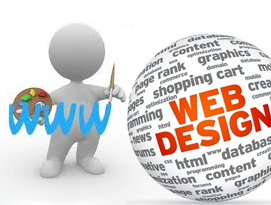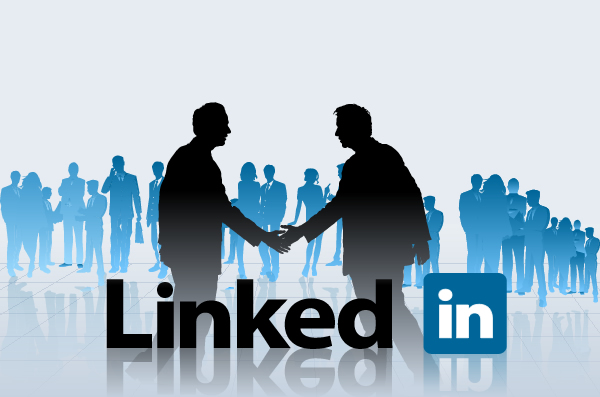Compared to other professions, web design is an unusual and frustrating occupation. While design is chosen as a career, it also prevails as a commoditized technical assistance industry. And it’s not essentially a bad thing; it’s the foundation of the market. It’s suitable only within a very narrow perspective and far smaller than is usually presumed. But, both web designers and the community take advantage of this product assistance feature in the industry.
The main problem in this situation is that there is no clear guide for prospective customers which details the variation between the product group/web designer and the expert groups. For complicating the matter is the fact that many who declare themselves to be design experts lack any knowledge of the term and, therefore, wrongly declare it. Consequently, those paying for the web designer's abilities do not know whether they will work with an experienced or a non professional until some issue of importance in the middle of a project makes it amply clear.
The uncompromising specifications of web design reliability are extremely constraining, costly and sometimes they even put you off. Yet for our standing and our clients’ fortunes they are our industry’s most essential attributes. Thus, the restrictions of reliability must be accepted and the expenses compensated.
The main problem in this situation is that there is no clear guide for prospective customers which details the variation between the product group/web designer and the expert groups. For complicating the matter is the fact that many who declare themselves to be design experts lack any knowledge of the term and, therefore, wrongly declare it. Consequently, those paying for the web designer's abilities do not know whether they will work with an experienced or a non professional until some issue of importance in the middle of a project makes it amply clear.
The uncompromising specifications of web design reliability are extremely constraining, costly and sometimes they even put you off. Yet for our standing and our clients’ fortunes they are our industry’s most essential attributes. Thus, the restrictions of reliability must be accepted and the expenses compensated.
Web Design as Commodity Service Engineering
Web designers and everyone who utilize them are acquainted with the idea of a web designer as specialist or a company. Need a graphic design? Tell the web designer what it should look like and he can design it according to the requirement. Need to design image gallery for your website that was not made to provide it? Explain the web designer how it should perform and he can make it ready for you.
Employing web designers as specialized service providers is an appealing prospect because it’s relatively simple, fast and low-cost. It’s also simple for the web designers. Non technical production assistance is mild on responsibility, numerous and often successful. Web design is a specialized assistance industry which is essential and beneficial. One could make an organization doing this sort of work specifically, and many freelancers and companies do just that.
Bear in mind that one aspect of a specialized technical employment, contrary to a professional career, is that the web designers get managed. Operating in a specialized assistance capacity means the web designer is there to offer little more than specialized assistance, according to the specifications, guidelines or vagaries of the one utilizing him. Web designers need to be kept on task, on promptness and their work moderated to indicate varying manager choices or client’s first choice, whichever provides more value.
The Concept of Reliability in Web Design
Without doubt, all web designers love the idea of reliability. I discover that many web designers when asked to determine it, neglect the uncompromising ethical, procedural, elegance and responsibility aspects. This is a regrettable and frustrating feeling, as reliability has absolutely nothing to do with specialized quality, which should merely be one beneficial result of projects including web experts.
The main reason for this preference is not so deep or challenging to recognize: reliability is costly for web designers. Appropriate planning takes decades and need institutional direction from senior professionals. Professional specifications encourage severe obligations on the web designers and are challenging to uncompromisingly sustain. They are also usually tasked the opinions of just about everybody who activates them.
The Professional Imperative
When you think outside the obviously fast money harvested expediency and low requirement presumed for some web design projects, a pair of factors begs for concern:
These features can legally explain only the most unimportant of tasks and web design outcomes and the procedures needed for recognizing them impact the encounter and performance of real individuals.
Uncompromising specifications are the concepts where high quality and values matter. A web designer comfortable with our allocation for compromise has no place in a resulting web design project. Since the commodity assistance strategy is built on compromise and expediency, resulting projects can in no way be provided by that section of our industry.
As experts, web designers then have obligations to the community, to their customers, to their colleagues, and to the career itself. These obligations are crucial and they need a culture that aspects, upholds and supports them with a regularity and design that do not rely on individual member’s desire. Eventually, web experts are described by how they fulfill and maintain the fullness of these obligations in the conduct of their work.
Technical assistance in a product industry can perform and can produce good outcomes. Web designers can discover benefits and many clients can discover fulfillment there. The design as a unique and noticeable section of the design industry is not just commercially crucial, it is socially and ethically crucial too.
Web design is a large and growing industry. You can make a good living out of it. Professional Web Design services are provided by both individuals and companies. For more information about this, and to get professional design services, you can hire Spinx Inc. where you will be able to employ skilled web designers. I hope you have liked this article. I look forward to your comments.
Web designers and everyone who utilize them are acquainted with the idea of a web designer as specialist or a company. Need a graphic design? Tell the web designer what it should look like and he can design it according to the requirement. Need to design image gallery for your website that was not made to provide it? Explain the web designer how it should perform and he can make it ready for you.
Employing web designers as specialized service providers is an appealing prospect because it’s relatively simple, fast and low-cost. It’s also simple for the web designers. Non technical production assistance is mild on responsibility, numerous and often successful. Web design is a specialized assistance industry which is essential and beneficial. One could make an organization doing this sort of work specifically, and many freelancers and companies do just that.
Bear in mind that one aspect of a specialized technical employment, contrary to a professional career, is that the web designers get managed. Operating in a specialized assistance capacity means the web designer is there to offer little more than specialized assistance, according to the specifications, guidelines or vagaries of the one utilizing him. Web designers need to be kept on task, on promptness and their work moderated to indicate varying manager choices or client’s first choice, whichever provides more value.
The Concept of Reliability in Web Design
Without doubt, all web designers love the idea of reliability. I discover that many web designers when asked to determine it, neglect the uncompromising ethical, procedural, elegance and responsibility aspects. This is a regrettable and frustrating feeling, as reliability has absolutely nothing to do with specialized quality, which should merely be one beneficial result of projects including web experts.
The main reason for this preference is not so deep or challenging to recognize: reliability is costly for web designers. Appropriate planning takes decades and need institutional direction from senior professionals. Professional specifications encourage severe obligations on the web designers and are challenging to uncompromisingly sustain. They are also usually tasked the opinions of just about everybody who activates them.
The Professional Imperative
When you think outside the obviously fast money harvested expediency and low requirement presumed for some web design projects, a pair of factors begs for concern:
These features can legally explain only the most unimportant of tasks and web design outcomes and the procedures needed for recognizing them impact the encounter and performance of real individuals.
Uncompromising specifications are the concepts where high quality and values matter. A web designer comfortable with our allocation for compromise has no place in a resulting web design project. Since the commodity assistance strategy is built on compromise and expediency, resulting projects can in no way be provided by that section of our industry.
As experts, web designers then have obligations to the community, to their customers, to their colleagues, and to the career itself. These obligations are crucial and they need a culture that aspects, upholds and supports them with a regularity and design that do not rely on individual member’s desire. Eventually, web experts are described by how they fulfill and maintain the fullness of these obligations in the conduct of their work.
Technical assistance in a product industry can perform and can produce good outcomes. Web designers can discover benefits and many clients can discover fulfillment there. The design as a unique and noticeable section of the design industry is not just commercially crucial, it is socially and ethically crucial too.
Web design is a large and growing industry. You can make a good living out of it. Professional Web Design services are provided by both individuals and companies. For more information about this, and to get professional design services, you can hire Spinx Inc. where you will be able to employ skilled web designers. I hope you have liked this article. I look forward to your comments.


 RSS Feed
RSS Feed